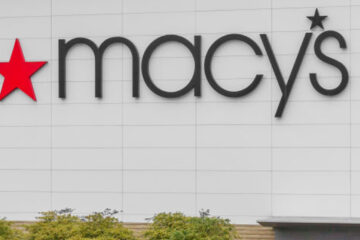I still have a PC with an AMD FX 8300 processor alive and kicking. That furnace is cooled with a giant Noctua cooler. I’ve assembled the machine myself. This line of AMD’s CPUs almost made the company bankrupt.
Engineering takes time, and even the best plans can fail and change. The architecture on which the FX 8300 was based was too big a jump. But AMD needed to make it as fast as possible, and it didn’t go well.
Fortunately, AMD didn’t go bankrupt. It used the knowledge from that failure to build Zen architecture, eventually defeating Intel.
Related: Google resolves major privacy issue
Lisa Su’s becoming CEO in 2014 also helped a lot. While she managed to get the company’s CPU business to flourish, the graphics cards part of the company stagnated, and it even practically gave up on competing with Nvidia in the high-performance tier.
The key to Nvidia’s success was always superiority on the software side. It is hard to tell what prevented AMD from catching up with Nvidia during the gaming era. However, the dominance of CUDA gave Nvidia a big advantage once the artificial intelligence era started.
Su has been working hard to fix this and has made some big moves recently.
AMD CEO Lisa Su is riding an AI fueled demand wave.
AMD inks deal for AI software specialists
AMD announced on June 4th that it acquired Brium, a team of compiler and AI software engineers with expertise in machine learning, AI inference, and performance optimization.
Brium will empower AMD’s (AMD) ability to deliver highly optimized AI solutions across the entire stack.
“Their work in compiler technology, model execution frameworks, and end-to-end AI inference optimization will play a key role in enhancing the efficiency and flexibility of our AI platform,” wrote AMD on its blog.
This deal follows acquisitions of Silo AI, Nod.ai, and Mipsology.
Related: Elon Musk’s DOGE made huge mistakes with veterans’ programs
Brium’s ability to optimize the entire inference stack before the model reaches the hardware will reduce dependence on specific hardware configurations and enable faster, more efficient AI performance across a wide range of deployments.
More Tech Stocks:
Palantir gets great news from the PentagonAnalyst has blunt words on Trump’s iPhone tariff plansOpenAI teams up with legendary Apple exec
The team will contribute to OpenAI Triton, WAVE DSL, and SHARK/IREE. This work is essential to enabling faster, more efficient execution of AI models on AMD Instinct GPUs. They have already successfully ported the Deep Graph Library to the AMD platform.
During AMD’s Q1 2025 earnings call Lisa Su stated:
“Several hyperscalers expanded their use of Instinct accelerators to cover an increasing range of generative AI search, ranking, and recommendation use cases. We also added multiple tier one cloud and enterprise customers in the quarter, including one of the largest frontier model developers that is now using Instinct GPUs to serve a significant portion of their daily inference traffic.”
“The depth and breadth of our customer engagements continues to expand as breakthroughs in large-scale AI models, like OpenAI’s o3 and DeepSeek-R1, drive increased demand for traditional inferencing and increasingly as a critical part of pre-training.”
AMD EPYC processors power Nokia cloud infrastructure
AMD announced on June 10th that Nokia (NOK) has included 5th Gen AMD EPYC processors to power the Nokia Cloud Platform.
“Working together with Nokia, we’re using the leadership performance and energy efficiency of the 5th Gen AMD EPYC processors to help our customers build and operate high-performance, and efficient networks,” stated Dan McNamara, senior vice president and general manager, server business, AMD.
Related: Amazon’s latest big bet may flop
By integrating the AMD EPYC 9005 Series processors into Nokia Cloud Platform, Nokia will deliver good performance per watt, an important factor in delivering both computing power and energy efficiency for modern telecom networks that face growing data demands.
Nokia Cloud Platform supports containerized workloads foundational to 5G Core, edge, and enterprise applications.
“This expanded collaboration between Nokia and AMD brings a multitude of benefits and underscores Nokia’s commitment to innovation through diverse chip partnerships in 5G network infrastructure,” stated Kal De, senior vice president, product and engineering, cloud and network services, Nokia.
“The new 5th Gen AMD EPYC processors offer high performance and impressive energy efficiency, enabling Nokia to meet the demanding needs of its 5G customers while contributing to the industry’s sustainability goals.”


